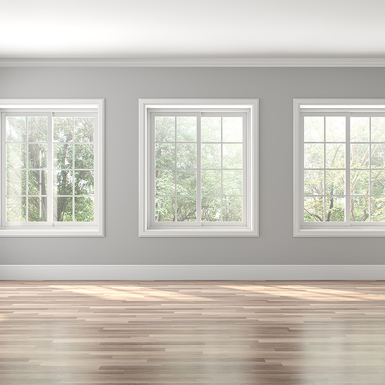7 Tips to Protect Vacant Homes
Property owners may find themselves with vacant structures for a variety of reasons. Whether it’s due to a recent renovation or transitioning between tenants, vacant structures can bear significant risk.
If clients own a vacant residential property in a well-populated neighborhood, for instance, they may expect neighbors to keep an eye out for suspicious neighborhood activity, as well as provide a possible heads-up when the weather is turning rough. But when those helpful neighbors are away for a period of time (for vacations, work trips, etc.), your clients may be left to protect their vacant property alone.
Some of the biggest threats to vacant homes are posed by weather-related events (such as hail damage, windstorms or flooding). Damage from these events can be devastating and occur with very little warning.
Beyond the risks posed by Mother Nature are those to which vacant property is especially vulnerable: criminal activity. Without the discouraging influence of tenants or the prying eyes of neighbors, vacant property is an attractive target for vandals, thieves and arsonists. Whether they intend to strip the copper pipes, fixtures and duct work, or simply cause damage to the structure, it can mean money out of clients’ pockets.
To help protect your clients from damages to their vacant property, consider sharing these risk mitigation tips.
- Perform regular maintenance.
Whether you personally perform regular work at the property or hire a service, it’s crucial to ensure maintenance is performed regularly. Not only should the consistent presence of someone at the property serve as a deterrent to criminal activity, but will also help to spot issues before they become larger problems (such as pipe leaks, checking faulty fire detection devices, damage caused by weather events, etc.).
- Practice fire prevention.
Make sure the exterior is free of paper, cardboard and other fire-prone debris, as well as combustible chemicals. Fifty-three percent of vacant building fires spread to involve the entire building, and an additional 11 percent spread to adjacent properties.*
- Check the plumbing.
Water intrusion can be among the most costly forms of damage to a structure. Make sure the plumbing is drained before any long period of vacancy. And should cold weather be expected, ensure the heat remains on to avoid a pipe bursting.
- Employ traditional security.
Place conspicuous security cameras around the property, and utilize a home security system that alerts you to any unwanted events like fire or trespassers. Should you choose not to use a home security system, simply placing yard signs advertising a security system provide some crime-prevention value.
- Embrace the light.
Set up motion-activated exterior security lights, or utilize a timer that keeps them on beginning at sunset. Time a few interior lights to appear as though someone as home. Make sure the lights are on in rooms that face the street, but close the blinds so onlookers can’t tell whether someone is inside. Remember the basics: keep all doors and windows locked (with additional padlocks, as needed).
- Beware advertisement.
While a “For Sale” sign in the yard of a vacant structure can be helpful when advertising a desirable structure, it may also make the structure more desirable for criminals. And if you must advertise online, do so without a picture of any valuable appliances inside, if possible.
- Secure vacant property insurance.
Insurance for vacant homes is available through US Assure and can apply to any vacant structure. This coverage has a number of advantages for policyholders, including the ability to cover multiple projects (within the same state, with the same occupancy coverage need) under the same policy. Additional benefits include coverage limits up to $5 million, with the option to purchase wind coverage, theft and vandalism, and the ability to convert to a landlord, or rental dwelling policy, if the property’s occupancy changes.
Vacant properties often bear a different degree of risk from their inhabited counterparts. To learn the questions you should be asking when selecting a provider for coverage to protect your clients’ property, download our free resource 10 Items to Consider Before Quoting Vacant and Rental Structure Insurance.
All information herein should serve as a guideline, which you can use to determine appropriate actions for your specific circumstances. Any and all information contained herein is not intended to constitute advice (particularly not legal advice). We do not guarantee the accuracy of this information or any results and further assume no liability in connection with the publication, including any information, methods or safety suggestions contained herein. We undertake no obligation to publicly update or revise any of this information, whether to reflect new information, future developments, events or circumstances or otherwise. We do not guarantee that adopting these policies and procedures will ensure coverage under any insurance policy.
*Vacant Residential Building Fires, U.S. Fire Administration











